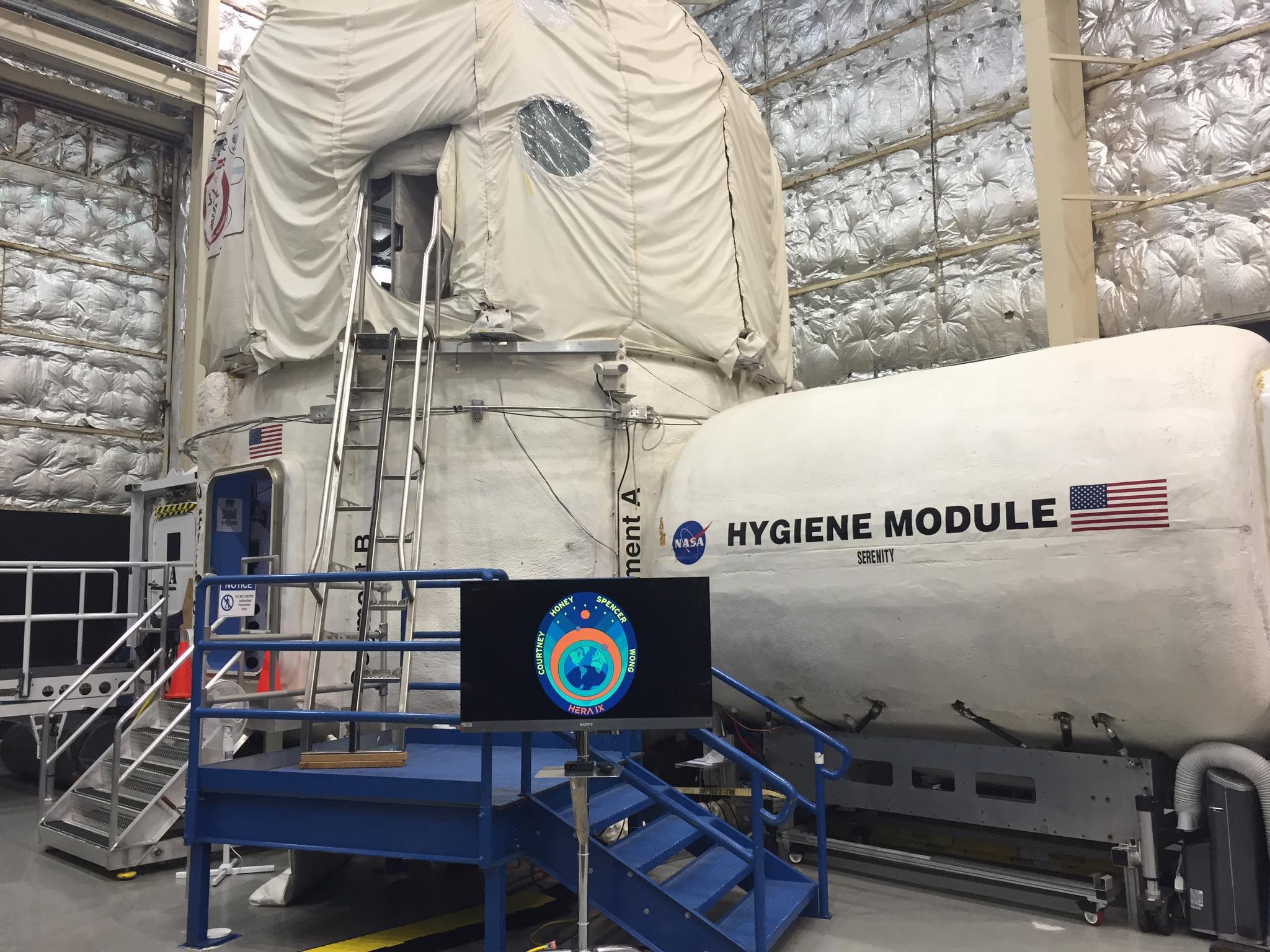![The HERA IX Crew [rocketsfromcassiopeia.com]](https://rocket-women.com/wp-content/uploads/2016/01/12593650_10100928446437722_3893988672667785669_o.jpg)
The four accomplished crew selected are Crew Commander Michelle Courtney, a Virgin Galactic aerospace engineer, Flight Engineer Julielynn Wong, a physician and researcher, Mission Specialist LaShelle Spencer, a NASA scientist focused on International Space Station (ISS) air and water purification along with food growth in space and Mission Specialist Leah Honey, a NASA ISS Flight Controller based at Johnson Space Center’s Mission Control. Typically previous HERA mission crew have been composed of two male and two female crew members, though as HERA IX crew member Leah Honey describes, “our mission is four women”. Similarly, three months ago Russia featured an all-female crew in an eight-day experiment to simulate conditions for a potential 2029 mission to the Moon.

![HERA IX Mission Patch [Julielynn Wong, M.D., Huffington Post]](https://rocket-women.com/wp-content/uploads/2016/01/2016-01-23-1453531196-6772038-HERApatch.png)
Being in the VR gear and feeling like I’m actually flying around an asteroid is definitely my favorite part of all this so far.
During HERA IX crew members will conduct experiments involving sea monkeys, plants and a 3D printer, however a great deal of their time will be spent training for “EVAs” or “spacewalks” the crew will simulate once we reach the asteroid. As Leah Honey describes, “Two of the crew members will stay inside the habitat and pilot our MMSEV (Multi-Mission Space Exploration Vehicle) to bring us from the habitat to the asteroid. Meanwhile, the other crew-mate and myself will be released from the robotic arm of the vehicle and use jet packs to get us to the specific parts of the asteroid that are considered the highest priorities for sample return. Of course, we’re not actually on an asteroid but rather in the airlock wearing virtual reality gear; after spending just 30 minutes in the VR gear today learning how the controller manipulated each degree of freedom, I definitely can see how real this whole mission can feel when all is said and done!” “Being in the VR gear and feeling like I’m actually flying around an asteroid is definitely my favorite part of all this so far.” Training for the crew also involved essential team building activities, psych screenings, learning how to design and plan the construction of water wells for a Martian colony and being taught how to use the Robotic Work Station to control the SSRMS (or Canadarm2)!
![Crew member Leah Honey driving the SSRMS to grapple an HTV from the Robotics Work Station in the HERA IX habitat. [rocketsfromcassiopeia.com]](https://rocket-women.com/wp-content/uploads/2016/01/ssrms.jpg)
